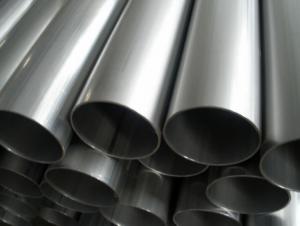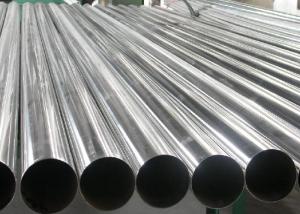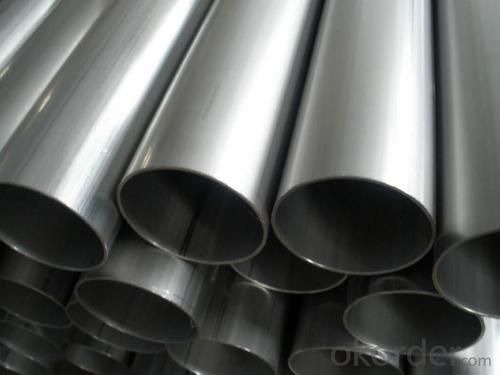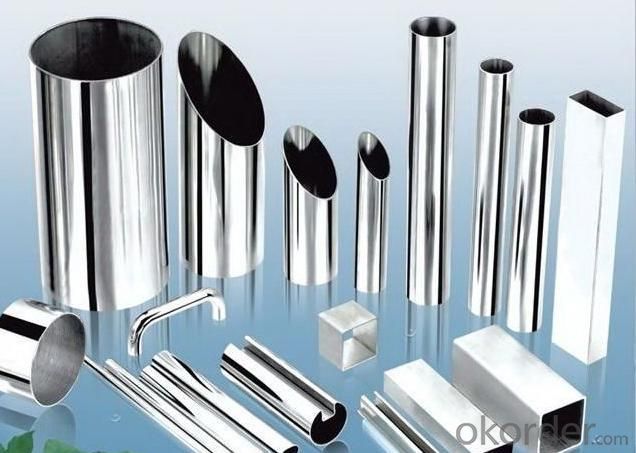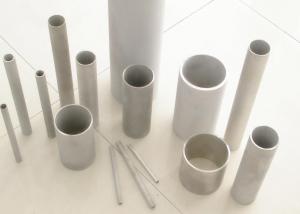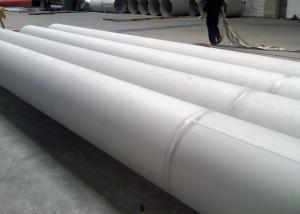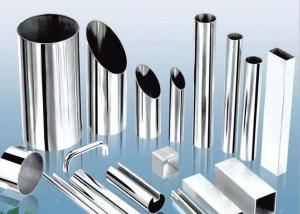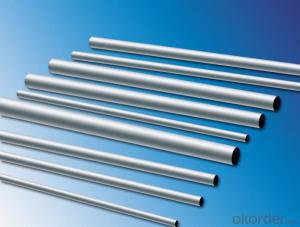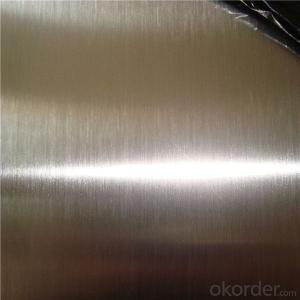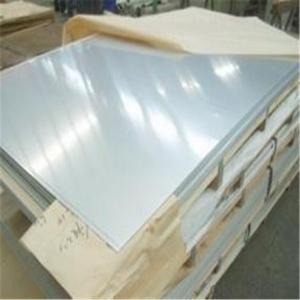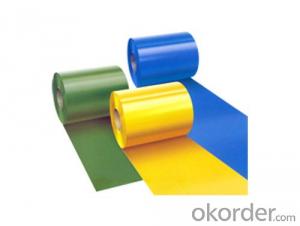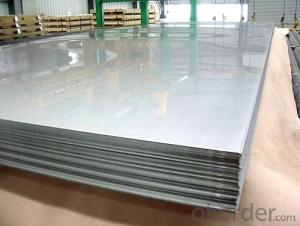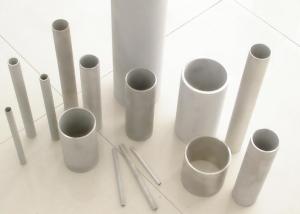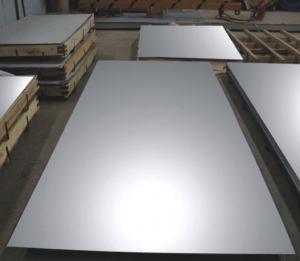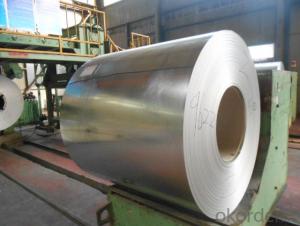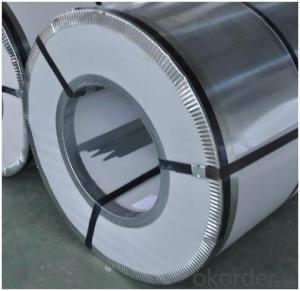316L Stainless Steel Welded Pipe
- Loading Port:
- China Main Port
- Payment Terms:
- TT or LC
- Min Order Qty:
- 5 Tons m.t.
- Supply Capability:
- 2000 Tons Per Month m.t./month
OKorder Service Pledge
OKorder Financial Service
You Might Also Like
Stainless Steel Welded Pipe
APPLICATION:
Industrial Fluid Conveying
Boiler,Heat Exchanger and condenser
Sanitary and Thin-wall water pipe
Oil and Gas transportation etc.
Standards :
ASTM A249/A269/A270/A312/A358/A788/A789/A790
DIN/EN 10217/DIN 11850
JIS G3459,GB/T 12771 etc.
SIZES:
|
OUTSIDE DIAMETER |
OD |
WALL THICKNESS | |||
|
SCH 5S |
SCH 10S |
SCH 40S | |||
|
N.B |
NPS |
mm |
mm |
mm |
mm |
|
8 |
1/4' |
13.72 |
- |
- |
2.24 |
|
10 |
3/8' |
17.15 |
- |
- |
2.31 |
|
15 |
1/2' |
21.34 |
1.65 |
2.11 |
2.77 |
|
20 |
3/4' |
26.67 |
1.65 |
2.11 |
2.87 |
|
25 |
1' |
33.4 |
1.65 |
2.77 |
3.38 |
|
32 |
1-1/4' |
42.16 |
1.65 |
2.77 |
3.56 |
|
40 |
1-1/2' |
48.26 |
1.65 |
2.77 |
3.68 |
|
50 |
2' |
60.33 |
1.65 |
2.77 |
3.91 |
|
65 |
2-1/2' |
73.03 |
2.11 |
3.05 |
5.16 |
|
80 |
3' |
88.9 |
2.11 |
3.05 |
5.49 |
|
90 |
3-1/2' |
101.6 |
2.11 |
3.05 |
5.74 |
|
100 |
4' |
114.3 |
2.11 |
3.05 |
6.02 |
|
125 |
5' |
141.3 |
2.77 |
3.4 |
6.55 |
|
150 |
6' |
168.28 |
2.77 |
3.4 |
7.11 |
|
200 |
8' |
219.08 |
2.77 |
3.76 |
8.18 |
|
250 |
10' |
273.05 |
3.4 |
4.19 |
9.27 |
|
300 |
12' |
323.85 |
3.96 |
4.57 |
9.52 |
|
350 |
14' |
355.6 |
3.96 |
4.78 |
11.13 |
|
400 |
16' |
406.4 |
4.19 |
4.78 |
12.7 |
|
450 |
18' |
457.2 |
4.19 |
4.78 |
14.27 |
|
500 |
20' |
508 |
4.78 |
5.54 |
15.09 |
|
550 |
22' |
558.8 |
4.78 |
5.54 |
15.09 |
|
600 |
24' |
609.6 |
5.54 |
6.35 |
17.48 |
|
650 |
26' |
660.4 |
5.54 |
7.92 |
17.48 |
|
700 |
28' |
711.2 |
5.54 |
7.92 |
17.48 |
|
750 |
30' |
762 |
6.35 |
7.92 |
17.48 |
|
800 |
32' |
812.8 |
- |
7.9 |
17.48 |
|
850 |
34 |
863.6 |
- |
7.92 |
17.48 |
|
900 |
36' |
914.4 |
- |
7.92 |
19.05 |
|
1000 |
40' |
1016 |
- |
9.53 |
- |
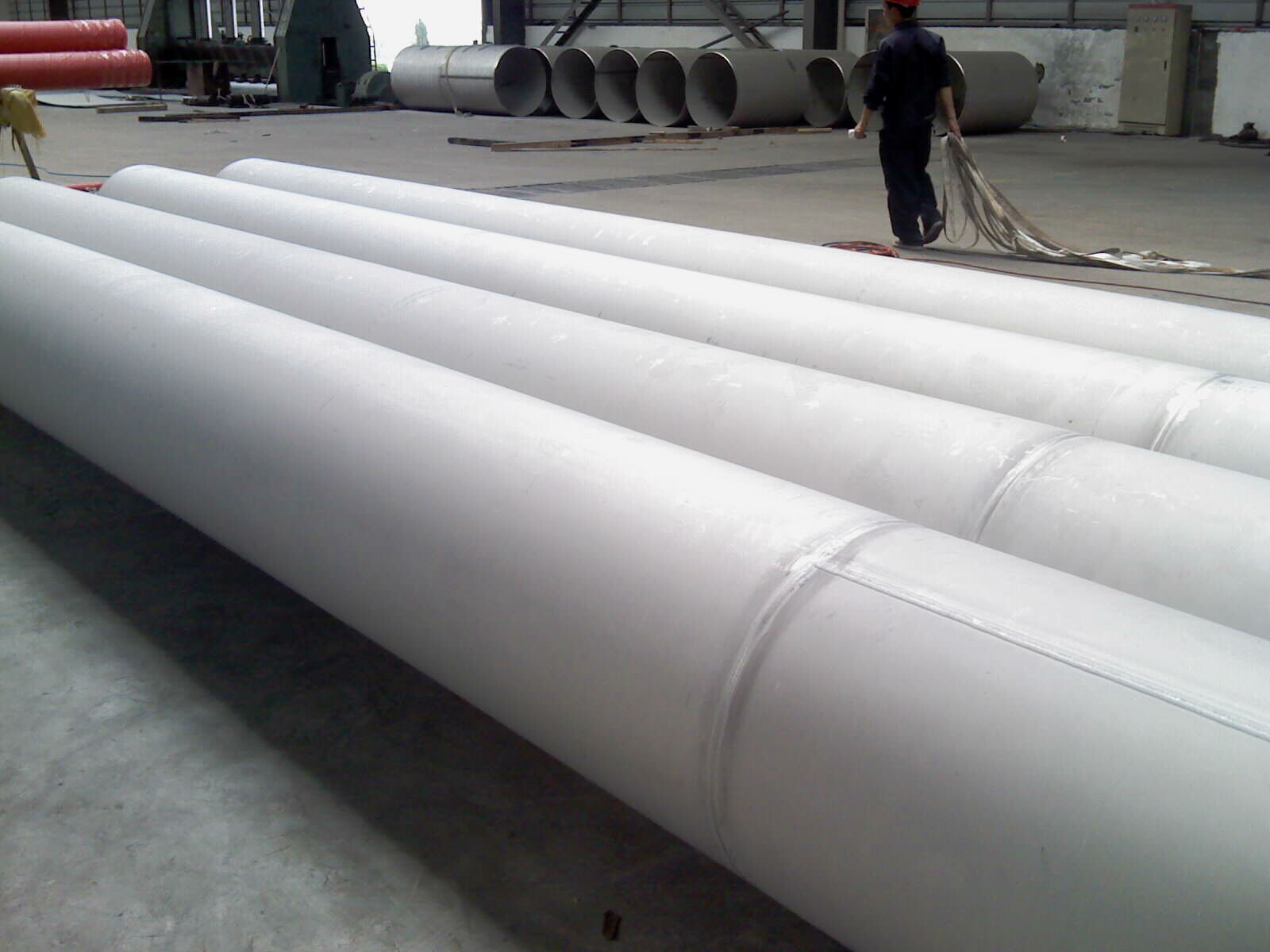
- Q: Can stainless steel sheets be recycled?
- Indeed, it is possible to recycle stainless steel sheets. Stainless steel, a material known for its high recyclability, boasts one of the most impressive recycling rates compared to other materials. Once stainless steel sheets have served their purpose, they can be gathered and transported to a recycling facility. The recycling procedure entails melting down the stainless steel sheets and reshaping them into fresh products, all while preserving their original properties and quality. This renders stainless steel an eco-friendly and sustainable material option. Additionally, recycling stainless steel aids in the preservation of natural resources, diminishes energy usage, and reduces waste.
- Q: Are stainless steel sheets suitable for wastewater treatment plants?
- Yes, stainless steel sheets are highly suitable for wastewater treatment plants. Stainless steel is known for its corrosion resistance, durability, and ability to withstand harsh and corrosive environments, making it an ideal material for such applications. It can effectively handle the challenges posed by wastewater treatment plants, including exposure to chemicals, moisture, and high temperatures, while maintaining its structural integrity and preventing contamination.
- Q: What are the common uses of stainless steel sheets in the food industry?
- Stainless steel sheets are commonly used in the food industry for various purposes such as food processing equipment, countertops, sinks, storage tanks, and machinery. The material's corrosion resistance, durability, and ease of cleaning make it ideal for maintaining hygienic conditions and preventing contamination in food preparation and storage areas.
- Q: Stainless steel sheet welding method, thickness of 0.5mm
- Welding power university, rated matrix current, peak current, pulse frequency, pulse width and other parameters are not the same.
- Q: How do you install stainless steel sheets?
- To install stainless steel sheets, start by measuring and marking the area where you want to install them. Then, use a circular saw or a metal shear to cut the sheets to the desired size. Next, clean the surface where the sheets will be installed and remove any debris or dust. Apply adhesive or a construction-grade adhesive tape to the back of the stainless steel sheet and carefully place it onto the prepared surface, ensuring it is aligned correctly. Use a roller or a block of wood to press the sheet firmly to the wall to ensure proper adhesion. Finally, secure the sheets in place with construction-grade adhesive or stainless steel screws, ensuring they are evenly spaced.
- Q: How do you remove heat discoloration from stainless steel sheets?
- To remove heat discoloration from stainless steel sheets, there are a few different methods you can try. One common method is to use a stainless steel cleaner or polish specifically designed to remove heat discoloration. These products often contain mild abrasives that can help to remove the discolored layer. Follow the instructions on the product and apply it to the affected area using a soft cloth or sponge. Rub gently in a circular motion, then rinse with water and dry thoroughly. Another method involves using a mixture of baking soda and water. Create a paste by mixing equal parts baking soda and water. Apply the paste to the discolored area and gently rub it in using a soft cloth. Rinse with water and dry thoroughly. If the discoloration is stubborn and the above methods haven't worked, you can try using a stainless steel scratch eraser or a fine-grit sandpaper. Be cautious when using these methods as they can potentially scratch the stainless steel surface. Always test in a small inconspicuous area first and proceed with caution. It's important to note that prevention is key in avoiding heat discoloration on stainless steel sheets. Using heat-resistant pads or trivets under hot pots and pans can help prevent heat transfer to the stainless steel surface. Additionally, avoiding direct contact with high heat sources, such as placing stainless steel sheets too close to stovetops or ovens, can also prevent discoloration.
- Q: Do stainless steel sheets require any special handling during installation?
- Yes, stainless steel sheets require special handling during installation to ensure their proper installation and to prevent damage. Some important considerations include using proper lifting equipment, ensuring a clean and dry surface, avoiding contact with other metals to prevent galvanic corrosion, and following the manufacturer's guidelines for installation and maintenance.
- Q: Are stainless steel sheets suitable for pharmaceutical applications?
- Indeed, pharmaceutical applications find stainless steel sheets to be highly suitable. The pharmaceutical industry extensively employs stainless steel due to its exceptional resistance to corrosion, hygienic qualities, and effortless cleanability. It remains non-reactive, guaranteeing the purity of pharmaceutical products by preventing any interaction with drugs or chemicals. Moreover, stainless steel sheets exhibit resistance to elevated temperatures, a pivotal aspect for sterilization procedures. Additionally, stainless steel proves to be a durable and long-lasting material, rendering it appropriate for pharmaceutical equipment and storage systems. In summary, stainless steel sheets encompass all the necessary characteristics demanded by pharmaceutical applications, thus establishing them as a favored choice within the industry.
- Q: What is stainless steel plate wire?
- But in the stainless steel industry said decimillimeter, such as stainless steel plate with the thickness of 1mm, the tolerance of 0.91 plus or minus 1 wire, a tolerance of plus or minus 0.01mm 0.91mm. That is to say here is actually in mathematics centimillimeter decimillimeter.1 wire =0.01 mm
- Q: How do you prevent intergranular corrosion in stainless steel sheets?
- Intergranular corrosion in stainless steel sheets can be prevented by using materials with low carbon content, such as the 304L or 316L grades, which are more resistant to intergranular corrosion. Additionally, heat treatment processes such as solution annealing or sensitization treatment can be employed to restore the corrosion resistance of the stainless steel sheets.
Send your message to us
316L Stainless Steel Welded Pipe
- Loading Port:
- China Main Port
- Payment Terms:
- TT or LC
- Min Order Qty:
- 5 Tons m.t.
- Supply Capability:
- 2000 Tons Per Month m.t./month
OKorder Service Pledge
OKorder Financial Service
Similar products
Hot products
Hot Searches
Related keywords
